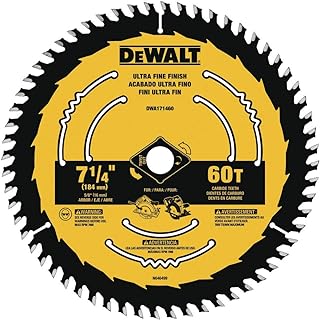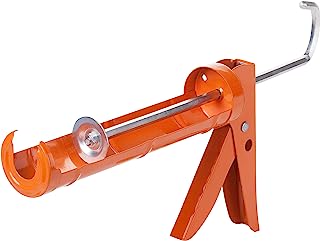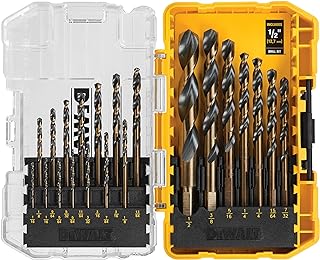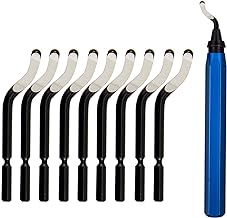5 important factors worth considering when looking for the best coping saw
When you start woodworking, the tools you choose are really important for how your projects turn out. The coping saw is one tool in particular that plays a big role in making detailed designs and curves accurately and easily. Whether you’re a beginner or a pro, picking the right coping saw involves thinking about a few important things to make sure you have a good experience. The quality of the blade, how easy it is to adjust the tension, how comfortable the handle is, and how durable the frame is all work together to help you do better woodworking. Understanding why these things are important can help you be more creative and precise in your projects, leading to better craftsmanship in everything you make.
See our guide to the best coping saw.
Blade type
When choosing the right blade for your coping saw, it can greatly affect how well your woodworking projects turn out. The type of blade you choose is like the heart of your saw, determining how detailed and precise your cuts will be. Some people prefer traditional blades for the nostalgia and reliability they offer, but there are now many different types of blades with various tooth patterns to meet different cutting needs. Using a blade with smaller teeth allows for more delicate cuts, perfect for detailed work and smooth curves. On the other hand, blades with larger teeth are great for quick and rough cuts, ideal for shaping larger pieces of wood efficiently and quickly. Ultimately, the decision comes down to personal preference and the specific projects you are working on, but trying out different blades can help you discover new ways to be creative and precise in your woodworking.
The material of the blade is also important in determining how long it will last and how well it will cut. High-quality carbon steel blades are durable and sharp, allowing for precise cuts over a long period of time. Bi-metal blades combine the strength of steel with the flexibility of high-speed steel, making them versatile for different cutting tasks. Titanium-coated blades are highly resistant to wear and are a great choice for tough projects that require durability. While premium blades may cost more initially, their superior performance and durability make them a valuable addition to any woodworker’s toolkit. Understanding the characteristics of different blades and materials empowers craftsmen to make smart decisions that improve the quality and precision of their woodworking projects, creating creations that will last for years to come.
Tensioning mechanism
When looking to buy a coping saw, it’s important to pay attention to the tensioning mechanism. This mechanism is crucial for how well the saw works and how accurate your cuts will be. Choosing a coping saw with a good tensioning mechanism can make your woodworking experience better by making cuts smoother and more efficient. It also helps to prevent the blade from slipping or breaking, so you can focus on your work without any issues.
Picking a coping saw with a tensioning mechanism that is easy to adjust and stable allows woodworkers to handle different projects confidently. Being able to adjust the blade tension quickly and easily for each task helps you achieve great results with precision. A reliable tensioning mechanism not only makes cutting easier but also makes woodworking more enjoyable and productive. By prioritizing a coping saw with a quality tensioning mechanism, craftsmen can improve their skills and craftsmanship, ensuring every cut is precise and well-done.
Depth of cut
When choosing a coping saw, it is important to focus on versatility and accuracy. A coping saw that allows you to adjust the depth of the cut gives you more control and precision for your projects. Being able to customize the blade depth makes it easier to make detailed cuts, resulting in smooth and polished finishes. By picking a coping saw with this feature, both experienced craftsmen and DIY enthusiasts can improve the quality of their work across a variety of cutting tasks.
Additionally, the depth of the cut is key in improving efficiency and productivity when working on woodworking projects. A coping saw that lets you adjust the depth based on the task at hand helps to make cutting smoother and reduces material waste. This flexibility gives users the confidence to work with different materials and thicknesses, expanding what can be accomplished with just one tool. Overall, investing in a coping saw that focuses on depth of cut not only enhances the quality of work but also simplifies the cutting process, making it a valuable addition to any toolkit.
Comfort and ergonomics
When choosing a coping saw, it’s important to prioritize comfort and ergonomics. Having a comfortable grip and a design that is easy on your body is essential when working on detailed woodworking projects. Picture yourself spending hours using a coping saw that hurts your hand or strains your wrist – it would be frustrating and could even lead to injuries. It’s crucial to select a coping saw that feels like an extension of your hand, with a grip that gives you control and keeps strain to a minimum, in order to get great results without sacrificing your comfort.
By investing in a coping saw that focuses on comfort and ergonomics, you can improve your woodworking experience and the quality of your work. By choosing a tool that fits well in your hand and supports your natural movements, you’ll be able to work for longer periods without getting tired or feeling uncomfortable. In the end, a coping saw that takes into account the human side of woodworking will not only make your projects more enjoyable, but will also help you be more creative and achieve top-notch craftsmanship that goes beyond what you expected.
Durability
Choosing a durable coping saw is crucial for woodworking. The saw needs to be able to handle continuous use and different levels of pressure. A durable coping saw will not only perform well but also last a long time, making it a worthwhile investment for any woodworker. The blade, frame, and handle of the saw all play important roles in determining its durability and overall quality.
If a coping saw is not durable, it is like building a house on weak ground – it won’t be reliable. It is important to invest in a coping saw that is known for its strong construction and materials to avoid constantly having to replace or repair it. Choosing a high-quality coping saw over a convenient one will ensure that your tools can handle precise cuts without any issues. In woodworking, durability is key, turning a simple tool into a trusted companion that allows craftsmen to bring their creative projects to life confidently and accurately.
Conclusion
The coping saw is a vital tool for experienced craftsmen and DIY enthusiasts in a world that values precision and flexibility. Its slim blade and sharp teeth make it easy to make detailed cuts and navigate tight corners and complex shapes. The coping saw is a perfect blend of artistry and functionality, allowing creators to bring their visions to life with precision and finesse. It serves as a symbol of the beauty of intricate work, showing that true mastery comes from those who are willing to use it boldly. Want more info on perfume oil for women chloe, check the best perfume oil for women chloe.



